In the lengthening days of early spring, when trees are barely coming into leaf, sunlight warms the earth.
As brighter days call us out into the world, now is the perfect moment to linger in the woods. And it is an ideal opportunity to experience the wonder of nature with all our senses.
Our experience is made in our perceptions. But sight, smell, sound, touch and taste connect us physically with the world, too. Even if one or more of our five primary senses is diminished or absent, everything we can perceive is a reminder that our bodies belong in nature. We cannot be separate from the earth, even if we try.
Sight
There is nothing quite so heart-stopping as turning a corner in the deep woods to see a dappled glade resplendent with a shimmer of bright flowers.
In countless British woods, swathes of violet-blue flowers dance in the breeze above soft leaves in an ephemeral display that will last only a few weeks. As the canopy above them develops and paths are cloaked with summer shadows, the bluebell’s moment of intense beauty will vanish as rapidly as it appears.
From a distance, a colony of bluebells can appear to be a solid carpet of colour rolled out across the ground. The intensity of the hue is so arresting, for a moment it is impossible to see the verdant foliage that support the tender flower heads. It is as if the sky has descended to make its home on the forest floor.
Be careful as you tread into a bluebell woodland. Soft foliage is easily crushed beneath unwary footprints. But if you can find a place to lie down, take a moment to lose yourself in the intricacy of a single bluebell.
Delicate violet stems arch from the green shoot, bending the flowers towards the ground. Petals curve and curl with an extravagant flourish at their tips. Look closely and you'll see each one is watercoloured in a soft wash of hues: mauve, lilac, translucent purple and opalescent white. Native bluebells are anything but blue.
Smell
On warm, humid evenings, the gentle honey scent of bluebells fills the air with sweetness. English bluebells lack the musky notes of their hyacinth cousins, and instead emit a light but heady fragrance that blends soft green florality with the sumptuous richness of nectar. Their complex and alluring perfume is crafted to carry on the breeze, tempting pollinating insects deep into the woods.
We have an endless dictionary to describe what we see in the world around us. Everything has a name, and every colour and shape has a thousand alternatives. But when it comes to scent, it can harder to find the words. As golden sunlight warms the earth and trees come into blossom, woodlands become a realm of memory and association.
While I can't conjure the smell of bluebells in my imagination, walking into a scented woodland somehow connects me with every glade of trees I have lingered in, from the dappled beech groves of chalk hills to the dense foliage of moorland valleys. My memories are likewise hidden from my conscious mind, but like the mycelial strands that create living connections in the soil, I find myself enmeshed in a dense network of stories about belonging.
Press your nose against a rotting branch. Sit among the wildflowers. Rest under a blossoming tree. Let the fragrance of the world root you in the present moment, even as it transports you to other times and places.
Sound
Spring woodlands are a symphony of birdsong, especially at dawn and dusk. Whether they are attracting mates, marking territory or simply singing for the joy of being alive, the music of birds announces their presence and fills the silence.
In the ecology of soundscapes, the music of the world is composed of anthropophonic sounds generated by humans, the biophonic melodies of living beings and the geophonic noises of the earth itself. If we listen closely, we notice that there is a deeper, more complex polyphony surrounding us.
One way to appreciate the rich diversity of sound is to make a map. Sitting quietly with a piece of paper, draw your position in its centre. From every direction, songs will carry themselves to your waiting ears. Pay attention to their volume, timbre, pitch, rhythm and distance, and translate these sounds into imaginative marks.
Notice, too, the feelings those sounds evoke in you. It is easy to welcome the gentle rustling of leaves, the scurrying of mice in the undergrowth or the melody of blackbird in a high branch. The chatter of human voices or the harsh buzzing of a distant lawn mower can be harder to accommodate. But we humans are as much a part of nature's symphony as any gurgling stream, creaking branch or bleating sheep.
Our song is just one in the chorus of life. The only important question is whether we are in harmony.
Touch
The largest sensory organ in our bodies in our skin. We develop the ability to touch before every other sense, and our capacity to feel is essential both to our survival and to the quality of our being in the world. Without touch, we are simply bodies floating in space, entirely disconnected from everything around us.
Experiencing the world through touch isn't just about texture, though a woodland offers endless variety with its rough bark, smooth stems, yielding earth and hard rock. We can feel the movement of the wind on our cheek, the warmth of the sun on our back, the differences in texture across the surface of a pebble. There is so much to explore.
Touch is also about connection. Even more so that our senses of sight, smell and hearing, touch brings us into an intimate relationship with other beings in the more-than-human community. You have never touched a tree without it touching you back.
Now the days are warmer, slip off your shoes and socks. Feel the energy of connection with the earth beneath your feet. Notice the gentle tickling of grass, the angular pressure of stones and the softness of cool mud squelching between your toes.
Taste
The feast for your senses isn't only metaphorical. On warm still days, a pungent tang fills the woodland air. You can often smell the presence of wild garlic before you see it.
Explosions of bright white star-shaped flowers stand tall over a jumble of glossy, bright green leaves. Each leaf emerges from the ground on a single stem. If you look closely, you can see the veins in the leaf run in parallel lines. But it is the scent of wild garlic that distinguishes it most clearly from any other plant.
If you're ever uncertain about foraging for wild food, it's best to leave it. Years ago, a foraging teacher told me that you should be as certain picking a plant as you are choosing an apple from a supermarket shelf. That's sound advice; other plants that can grow with wild garlic like lords and ladies or lily of the valley are toxic.
But except in sites of special scientific interest and nature reserves, where it should be undisturbed, wild garlic offers a wonderful introduction to foraging. It grows vigorously when it's well established but it's still important to be respectful in what you take. Picking one leaf in twenty gives the plant plenty of opportunity to thrive, even if other foragers come after you.
As the plant ages, its flavour increases. So choose young, small leaves if you don't want to overwhelm your taste buds.
My favourite thing to make with wild garlic is pesto. Leaves and stalks, pulsed with toasted walnuts, extra virgin olive oil and salt make a rich green sauce that's delicious with pasta. Be warned though that any leftovers stored in the fridge will become more pungent with time. Wild garlic pesto is fragrant and aromatic on the day you make it, but may be inedibly powerful a week later, so only forage what you can use immediately.
Beyond five senses
Stand on a log and you'll become acutely aware of your sense of balance. Close your eyes and touch your nose, and you're engaging with proprioception, your sense of awareness of your own body. Feel the warmth of the sun on your skin as you lie in soft grass; that's your ability to sense heat.
Senses can offer a direct connection with your emotions, too. As you wander through the woods on a spring evening, pay attention to the intricate dance of feelings that entwine with your sensory observations. Let yourself be moved as you move.
And for many of us, our senses are deeply interconnected with our memories. I have SDAM, or severely deficient autobiographical memory, which means I can't relive past experiences in my imagination. But if you can, cherish and nurture the incredible gift of your senses through time. Every moment of wandering through a springtime wood reinforces your connection with the living world, creating patterns of positive association that you can carry with you wherever you go.
I compensate for my lack of autobiographical memory through journaling, photography, sound recording, collecting objects and personal storytelling. These are powerful tools for capturing the present and reimagining the past that anyone can enjoy, whether you can relive your memories or not. Record your experiences of the world however you can.
Lean into your intuition, too. Walking with your senses is not just an exercise in data collection. It opens a door to wonder. Let the living world speak to your heart and soul in the sights, smells, sounds, textures and tastes of spring.
And let me know what you discover.


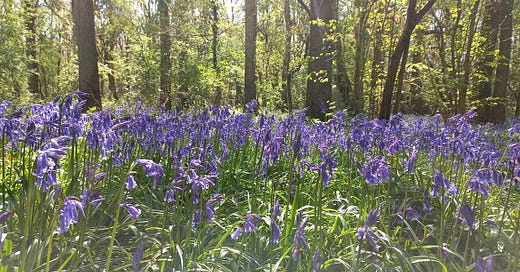



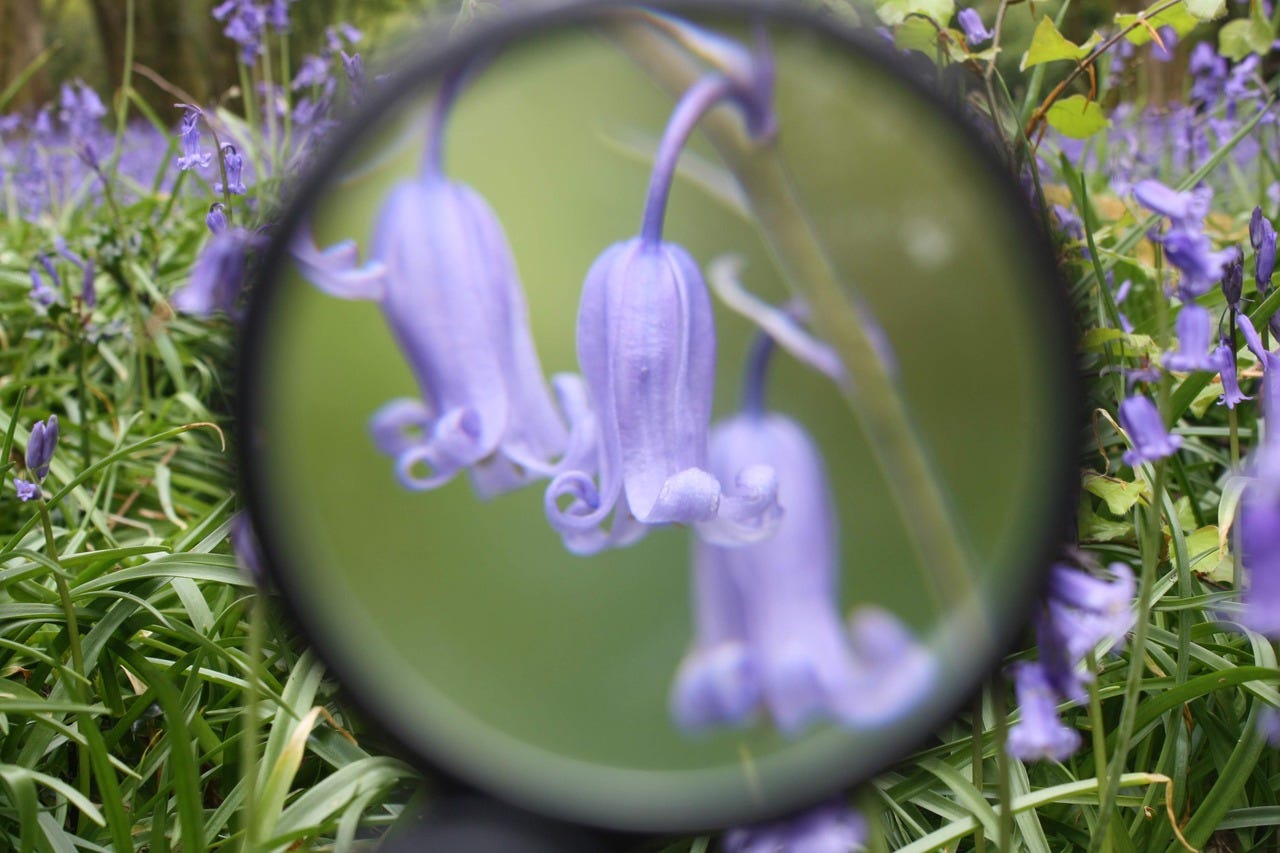
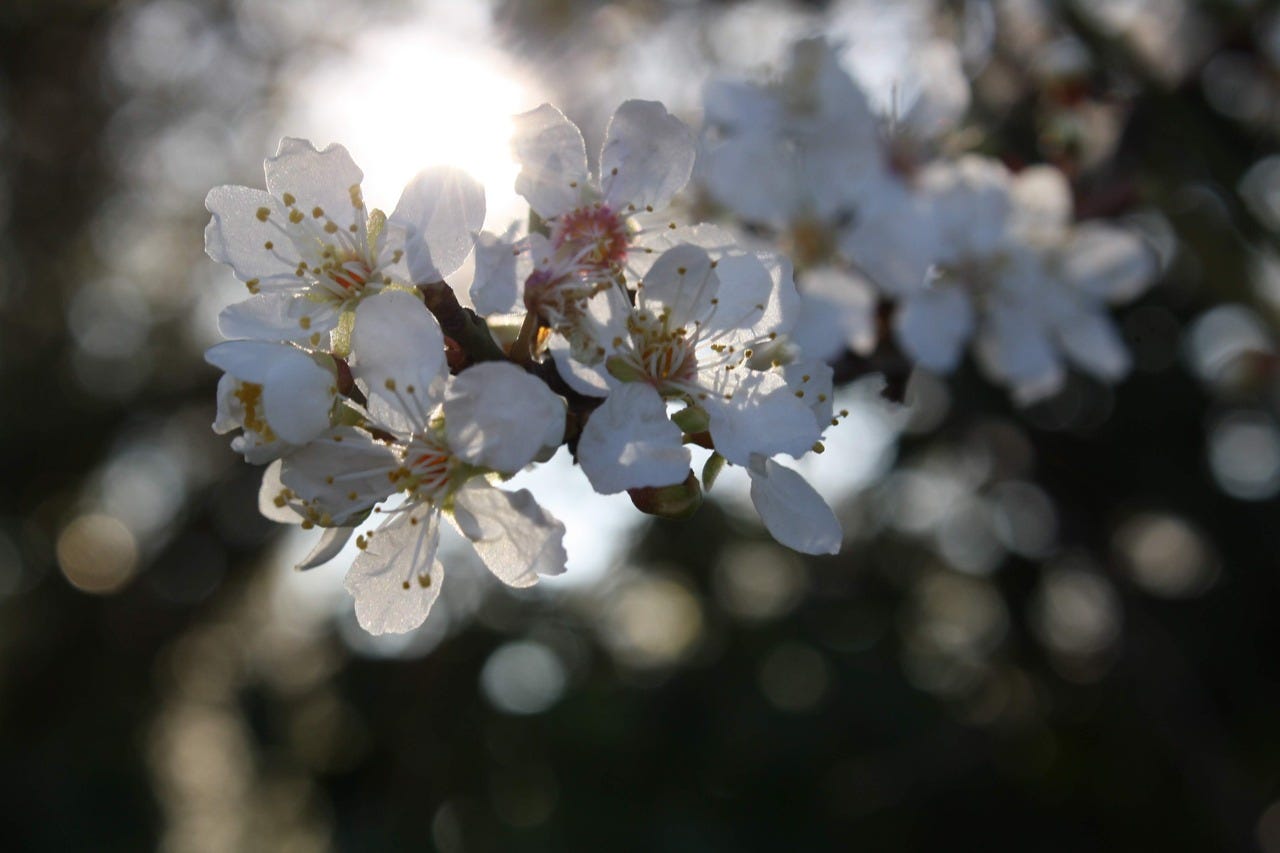
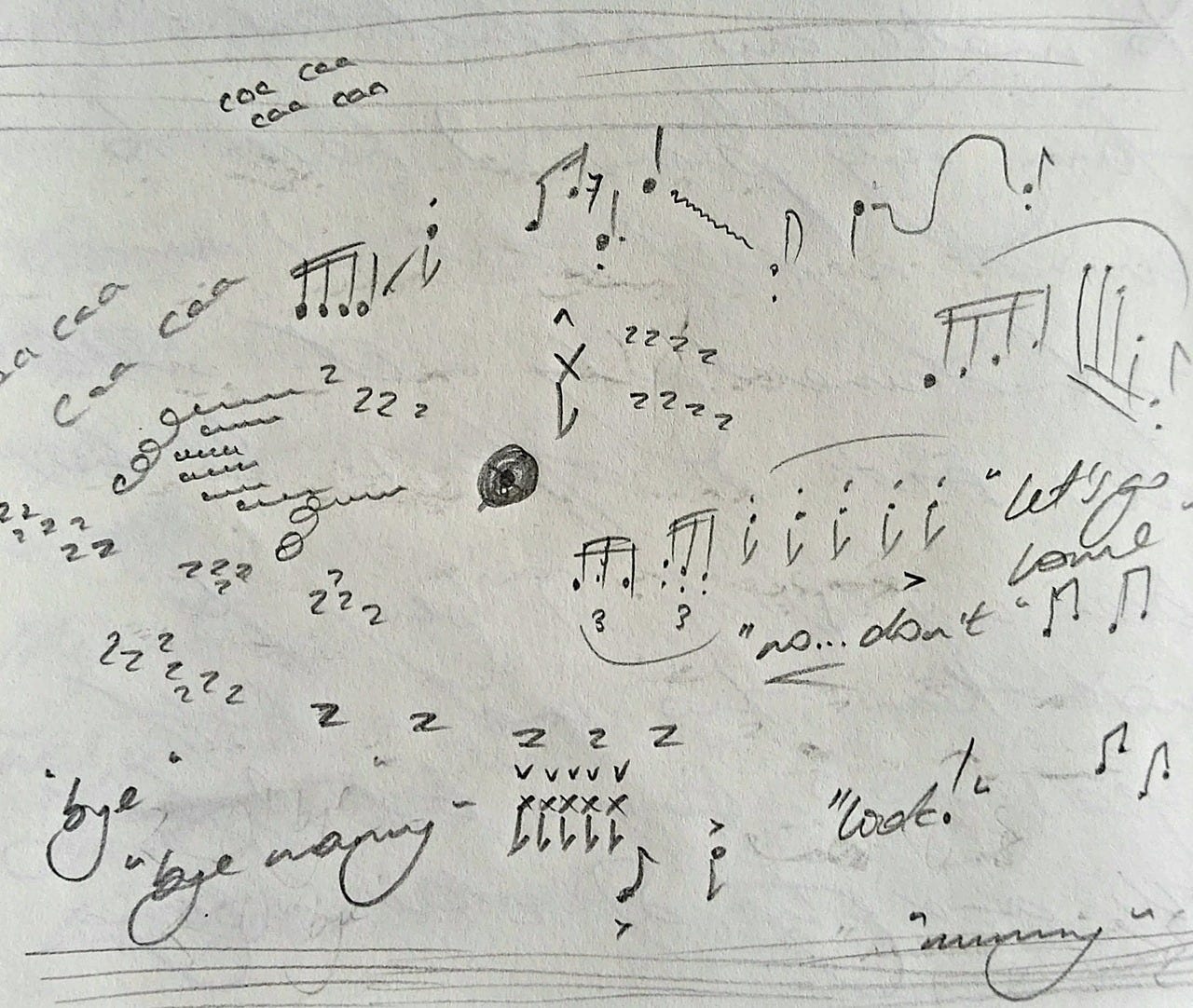

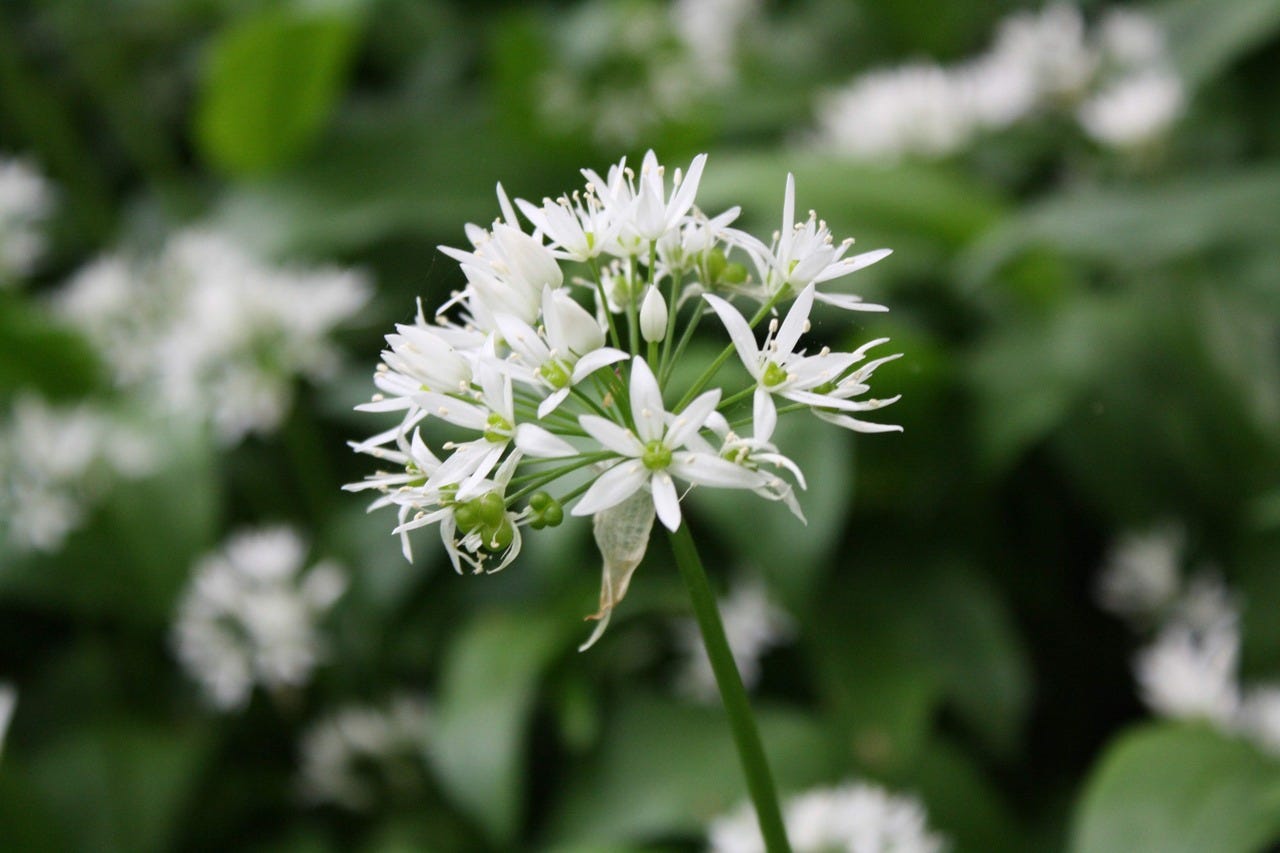
Yes, I love your rift on more-than-five senses. Even more than six. Thank you!
The smell of spring was strong yesterday as I stepped out of my car, the sticky bud smell was delightful. The earth is warming once again.
Thanks for this beautiful encouragement to experience the moment with all the senses.